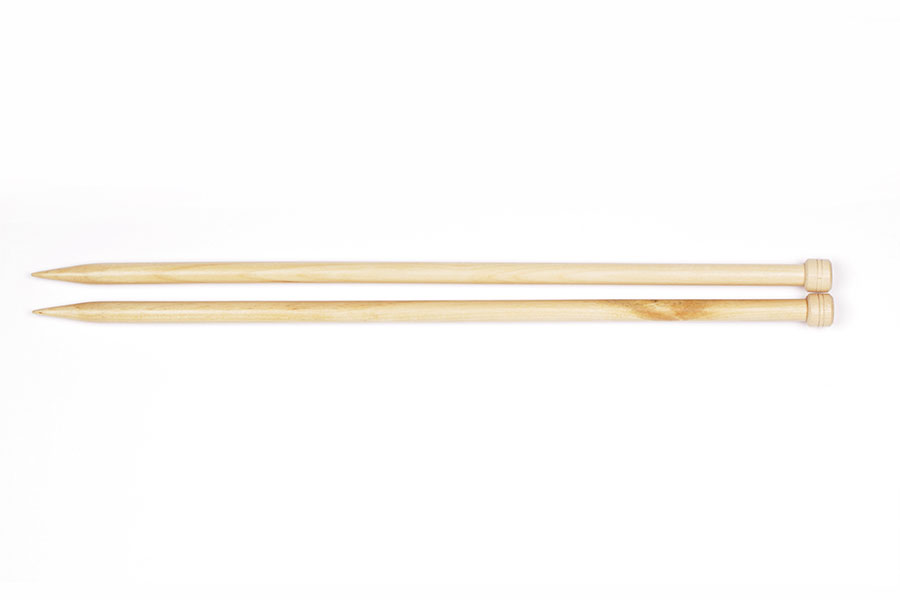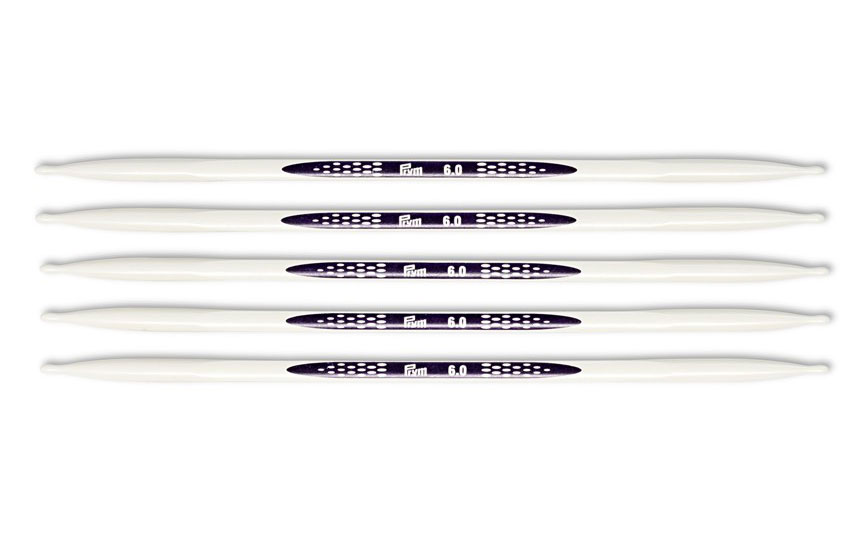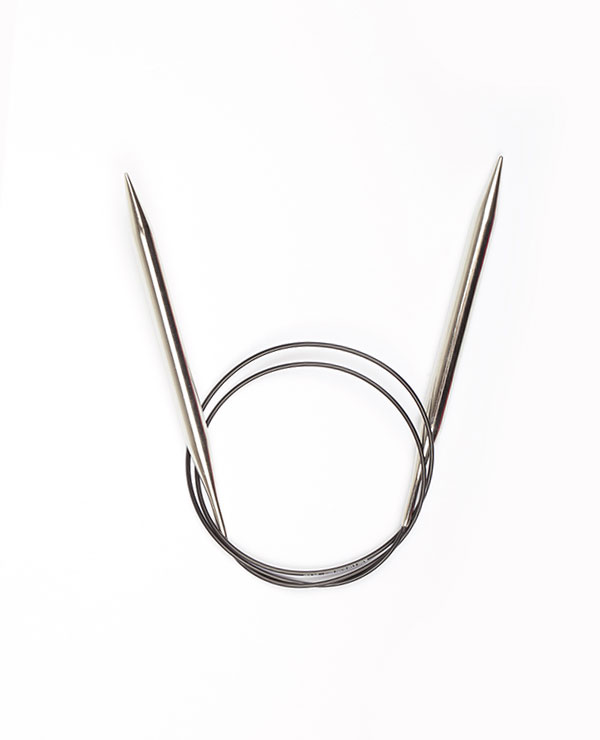Guida ai ferri e uncinetti
FERRI ED UNCINETTI DA MAGLIERIA
I ferri da maglia e gli uncinetti sono disponibili in diverse forme e dimensioni e possono essere realizzati con un'ampia gamma di materiali.
La varietà di materiali di questi strumenti di lavoro è legata alle diverse tipologie di filato proprio per adattarsi al meglio alle infinite grossezze, titoli, composizioni e caratteristiche.
Man mano che si acquisisce esperienza, si sviluppano preferenze di lavoro soggettive e si comprendono le ragioni per le quali determinati materiali di ferri o di uncinetti funzionano meglio per determinati filati e determinati progetti.
TIPOLOGIE
Esistono tre tipologie standard di ferri per maglieria:
- ferri dritti
- ferri a doppia punta
- ferri circolari
Ciascuna di queste viene utilizzata per lavorare a maglia in un un modo specifico.
Tutti i ferri sono poi classificati per circonferenza e lunghezza , che sono elementi fondamentali ai fini della lavorazione, sia per la tecnica da utilizzare che per il filato da lavorare.

1. Ferri Dritti
Questi sono i ferri tradizionalmente associati al lavoro a maglia. Hanno una punta ad un'estremità e un tappo all'altra. Sono usati per produrre “pezzi” piatti di maglieria. La lavorazione a maglia è costruita lavorando file successive l'una sopra l'altra. Si completa una riga, quindi si gira il lavoro e si crea la riga successiva nella direzione opposta.

2. Ferri a doppia punta
I ferri a doppia punta consentono di lavorare a maglia i “tubi” di maglieria a tutto tondo. Comunemente associati alla realizzazione delle calze , si utilizzano quattro o cinque ferri per lavorare a cerchio, o più precisamente, a spirale, creando un tubo senza cuciture. Le file vengono contate come round, con l'ultimo punto di un giro che conduce direttamente al primo punto del successivo. Il lavoro viene a volte trasformato in modo convenzionale, ad esempio quando si formano o si "girano" i talloni.

3. Ferri Circolari
I ferri circolari sono costituiti dalle punte dei ferri più corte rispetto a quelle tradizionali, unite tra di loro con un cavo flessibile. Questi ferri possono essere usati come normali ferri dritti per lavorare a maglia avanti e indietro, ma possono anche essere utilizzati per lavorare a tondo. Permettono di avere molti punti sul ferro, e sono dunque ideali per lavorare scialli di grandi dimensioni. Alcune tecniche tradizionali di maglieria in stile nordico utilizzano la maglia circolare per realizzare maglioni senza cuciture, o per lavorare maniche senza cuciture. Esistono due tipi di ferri circolari: Ferri circolari fissi: i puntali sono fissati permanentemente al cavo e sono disponibili in combinazioni di lunghezza e ferro specifiche. L'unione tra punta del ferro e cavo è regolare per consentire ai punti di viaggiare facilmente da un cavo all'altro. Ferri circolari intercambiabili: le punte e i cavi del ferro sono realizzati separatamente, con punte che possono avvitare le estremità del cavo. Ciò significa che possono essere uniti in qualsiasi combinazione di dimensioni del ferro e lunghezza del cavo, offrendo alla magliaia molta flessibilità in una vasta gamma di progetti. Lavorare a maglia in tondo presenta diversi vantaggi: si eliminano molte cuciture e lavori extra di finitura ed anche il peso del lavoro che le braccia devono sostenere durante la lavorazione è decisamente inferiore. È inoltre possibile sostituire coppie di ferri circolari ai ferri doppia punta, oppure utilizzare solo un ago circolare e la tecnica del loop magico per realizzare calze, maniche o altri progetti di lavorazione a forma di tubo.
MATERIALI DEI FERRI E DEGLI UNCINETTI
I diversi materiali dei ferri sono stati progettati per aiutare la magliaia a gestire il filato da lavorare in modo efficiente e ad aggiungere confort per esercitare il minor sforzo possibile sulle mani.
Metallo
Questo materiale molto familiare per i ferri li rende molto scorrevoli e la lavorazione risulta molto veloce. E’ l'ideale per i filati che possono essere pelosi e fibrosi, aiutando i punti a scivolare senza intoppi. I ferri in metallo, alluminio, acciaio e fibra di carbonio sono adatti per le punte più sottili, indispensabili per determinati filati e con lavori di cucitura complessi come pizzi fatti con punti molto sottili o complessi lavori a maglia.
Legno
Questi ferri hanno un po' di "mordente" sulle loro superfici leggermente ruvide. Perfetto per i filati pelosi, gli aghi in legno e bambù aiutano a fermare i punti di scivolamento dai ferri stessi. Sono caldi e morbidi al tatto, sensazioni gradevoli in particolare per le sferruzzatrici che soffrono di problemi alle mani come il tunnel carpale o l'artrite.
Plastica e materiale sintetico ad alte prestazioni
Questo materiale, leggero, molto comodo da lavorare, è caratterizzato in questi strumenti di lavoro da un nucleo flessibile che ne impedisce la rottura. Disponibili in un arcobaleno di colori divertenti, i ferri in plastica o materiale sintetico sono ideali per incoraggiare i bambini a imparare a lavorare a maglia.
Dimensioni
lunghezza: I ferri dritti (a punta singola) sono disponibili in diverse lunghezze: 35 e 40 cm. I ferri a doppia punta sono disponibili in tre lunghezze: 10,15, 20 cm. I ferri circolari ( misure del cavo più le punte) sono disponibili nelle seguenti misure: 25 cm, 40 cm, 50 cm, 60 cm, 80 cm, 100 cm, 120 cm, 150 cm. spessore: I ferri da maglieria sono disponibili dalla grossezza n° 2 alla n° 20. Gli uncinetti sono disponibili dalla misura n° 0,60 alla n°15
